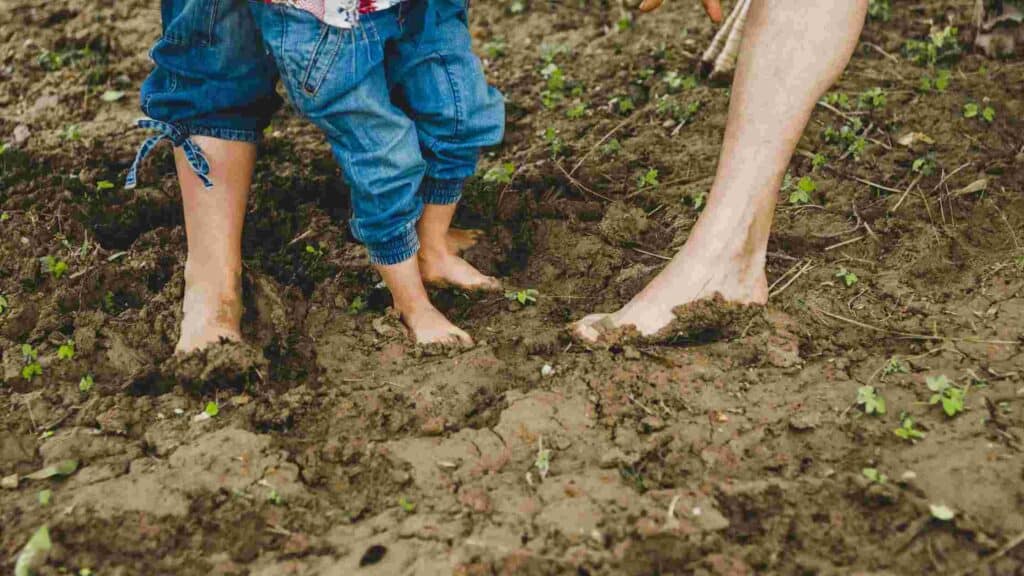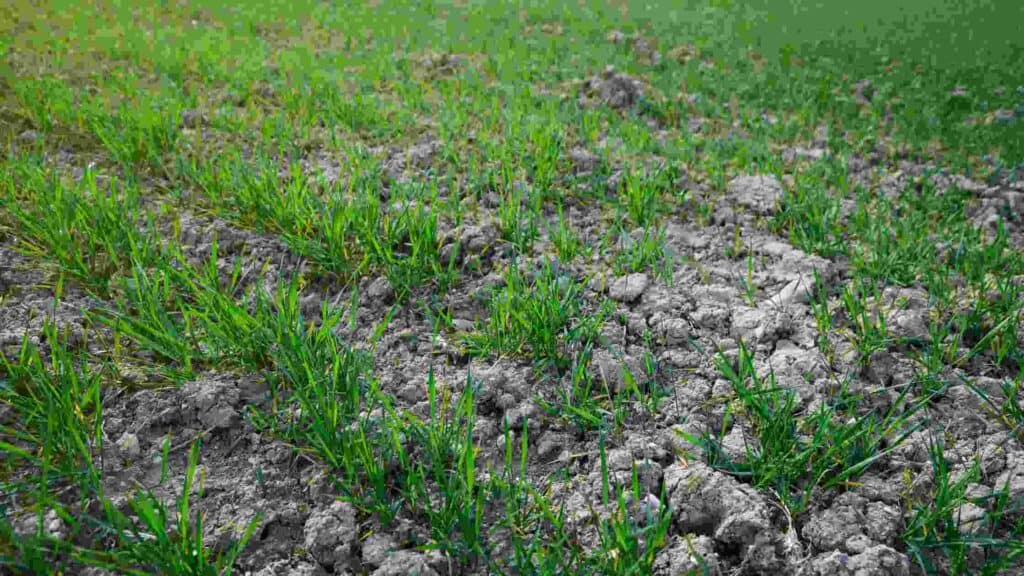If you’re curious about how to find clay in your backyard, you’re in for a creative adventure. Working with clay can be immensely satisfying, whether you’re molding it on a pottery wheel or sculpting by hand.
But here’s the secret: the most special creations aren’t crafted from store-bought clay; they come to life from the raw, natural clay you unearth yourself.
Now, you might be thinking that clay is a rare find, hidden deep within the Earth. In reality, clay is more common than you might imagine, and with a little guidance, you can embark on a treasure hunt for this versatile material.
However, we must caution you that it may not be as simple as walking out into your backyard and spotting a mound of clay. It often likes to play hide and seek.
The Quest For Clay: How To Find Clay In Your Backyard
When you’re pondering how to find clay in your backyard, your first step is to explore your area online for clay deposits. It’s like checking a map for buried treasure, and you might just strike gold—well, clay, in this case.
However, keep in mind that clay won’t pop up like a surprise party in your yard; you’ll need to seek it out. It tends to blend seamlessly with the surrounding soil, but there are some telltale signs.
Clay possesses a distinct silky and smooth texture. It doesn’t always jump out at you, but once you feel it, you’ll know.
And here’s a helpful tip: if you’re close to water, like a lake or stream on your property, chances are you’ve got a generous deposit of clay nearby. Clay is a water-loving material, and it tends to gather around such areas.
Clay can come in various colors, but the most common hues are a mix of dark and light brown. To confirm it’s clay, place a sample in water and either mix it or let it sit for a day or two.
If it dissolves into a slimy, smooth mush or liquid, congratulations, you’ve found clay! It’s a texture that potters are quite familiar with.
Fun For All Ages

Clay exploration isn’t just for adults. Children’s love for getting their hands dirty can be transformed into a valuable learning experience.
Introducing kids to the process of finding and processing clay offers a wonderful opportunity to teach them about hard work, creativity, and art.
Moreover, it’s a fantastic excuse for youngsters to revel in outdoor fun. You can allow children to engage with clay under supervision, fostering their creativity while ensuring their safety.
However, a crucial rule is to never let them ingest the clay they’re working with, as there may be microscopic debris that could pose health risks. Always maintain vigilant supervision when kids are playing with any type of clay.
Thankfully, unlike concerns with fire pits or other activities (check out: How hot does a fire pit get?), you won’t need to fret about the legality of digging for clay. This is the case, unless you’re on someone else’s property or local regulations prohibit it.
How To Purify Clay From The Ground
Now that you’ve unearthed your clay treasure, it’s time to prepare it for artistic endeavors. The initial step involves digging it out and separating it from the mud and dirt.
Be warned, this isn’t always a walk in the park, but it’s essential to ensure your masterpiece doesn’t turn into a disaster when fired.
First and foremost, allow the clay to dry completely. Patience is key here, but placing it on a concrete slab can expedite the process. This step solidifies everything within the clay, providing a sturdy foundation.
Next, soak the clay in water. This transforms it into a mushy substance called “slip,” making it easier to extract unwanted debris like twigs and rocks. Removing these impurities is crucial for your safety and the success of your clay project.
To rid the clay of debris, pass the clay-infused water or slurry, through a mesh screen. The smaller the mesh, the better it will catch tiny particles. This process not only makes your clay safer to work with but also sets the stage for crafting your masterpiece.
You may also be interested in checking out how to soak up excess water in yard.
Dealing With Possible Risks
When it comes to finding your own clay, potential hazards are, fortunately, not overwhelming. Most of the concern arises from the possibility of leaving debris in the clay. It’s a reminder to be meticulous in your clay-gathering process.
Even in the comfort of your backyard, exercising caution is essential. You might unexpectedly encounter some unwanted guests, like burrowing animals or ground wasps. These critters may not be the best companions on your clay-collecting adventure.
However, these hazards don’t extend much further as long as you’re on your own property. Discovering how to find clay in your backyard is a relatively straightforward process, and the risks tend to stay minimal.
Interestingly, during the separation process, the slip created by the clay can serve as a fantastic glaze option.
It’s easy to work with, quick, and cost-effective, making it a favorite among professional potters who not only source their own clay but also glaze with their own slip extracted right from the ground. These experienced artisans are well-acquainted with the potential dangers lurking in their surroundings.
No Clay In The Yard? No Problem!

Now, what if your backyard happens to be devoid of clay deposits?
Don’t worry; you’re not out of options for clay-related fun. You can easily purchase the clay you need instead of digging it up from the ground.
Alternatively, explore other legal avenues to obtain clay on your terms, just be sure to respect others’ property boundaries during your quest.
Exploring Beyond Your Backyard For Clay
When your own backyard isn’t yielding the clay treasure you seek, don’t lose heart. Public lands can be a fantastic place to begin your quest for this versatile material.
However, it’s essential to adhere to a simple mantra: “Respect nature and it will reward you in kind” when venturing into the great outdoors. We believe in preserving our natural spaces.
If you opt to collect clay from the wilderness instead of buying it, make sure you come prepared.
Bring along the necessary tools of the trade, including at least a sturdy bucket and one shovel. These items are your ticket to securing your clay haul and bringing it back to your creative sanctuary.
Local clay, often abundant and close at hand, can be some of the finest materials to work with. The process of finding and preparing it is relatively straightforward.
FAQs
1. Where can you find clay soil?
You can find clay soil in various places, including riverbanks, lakebeds, and areas with wet, compacted earth.
2. How far down do you find clay?
The depth at which you find clay can vary, but it can be found from a few inches to several feet below the surface.
3. Can I make clay from the dirt in my backyard?
You can make clay from the dirt in your backyard by extracting it, drying it, and processing it to remove impurities.
4. What does clay from the ground look like?
Clay from the ground typically looks smooth, and silky, and can vary in color, often appearing as a mix of light and dark brown.
5. Where to find natural clay deposits?
Natural clay deposits can be found near water sources like rivers, streams, and lakes, as well as in regions with specific geological formations.
6. Where to get clay for pottery?
You can obtain clay for pottery from art supply stores, online retailers, or by digging and processing your own clay if you have access to suitable deposits.
Conclusion: How To Find Clay In Your Backyard
Thankfully, if you’re on a mission to discover how to find clay in your backyard, chances are you’ll succeed. Unlike searching for elusive treasures like gold, clay is a common presence, with approximately 75% of the Earth’s landmass containing this valuable material.
So, no matter where your backyard is located, you have a good shot at uncovering clay’s hidden potential right on the property.
However, if your backyard simply doesn’t yield the clay you desire, or geological charts indicate a scarcity in your location, fear not.
You can always expand your horizons in search of a little muddy family adventure. It’s astonishing what creative wonders can emerge when clay is placed before someone with a penchant for creativity.
While clay often thrives near waterways, providing an ideal starting point for your search, it doesn’t always have to be right on the waterfront.
Clay can also be found a bit further inland, thanks to its widespread availability. With such a bountiful resource, it’s no wonder you’re eager to embark on a quest to find clay, whether it’s in your own backyard or beyond.
You might also find the following article helpful: How to find gold in your backyard.
